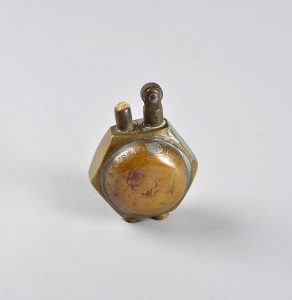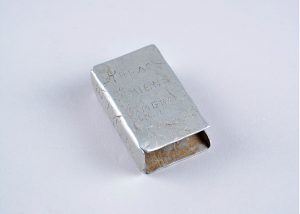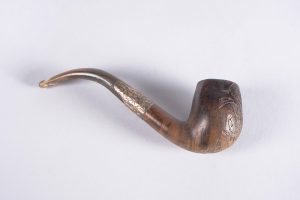Lighting the Way to Individualism: the Match Safe of Harry Ritz
Harry Ritz’s Quick Journey to War
In 1915, Harry Franklin Ritz was an assistant postmaster in Lacombe, Alberta. In January of 1916, when he was 18 years old, he joined the First World War. In November of 1916, only months after joining, he found himself on the front lines of the Battle of the Somme near Albert, France. He fought this battle with the 78th Infantry Battalion.
Psychological Struggles and Deplorable Conditions
Going to battle so quickly after recruitment caused some psychological struggles. The deplorable conditions of the landscape complicated these struggles further. The Battalion War Diary for one day in the first week Ritz arrived read, “weather rain and mist—mud up to the men’s hips both in the front line and support trenches…casualties for forward line 6 killed 14 wounded.”
Spare Time Art
When he was not directly involved in the adverse and dehumanizing experiences of these conditions, Ritz found himself with free time on his hands. Like many soldiers, he entertained himself with making objects from materials accumulated from battlefields.

A lighter made by a soldier in the First World War. Brass, metal and British coins, 4.7 x 3.5 x 2.2 cm.
One object he made was a small match safe upon which he scratched his name, his battalion and some of the many battle honours they had earned. This simple piece of war-related craft reflects so much regarding the life a soldier in wartime.
Aluminum as a War and Art Material
During the First World War, the military pioneered the use of aluminum in airplanes. This light and malleable metal served the functions of aviation. Its malleable nature allowed for the efficient production of planes. Its light weight reduced fuel consumption.
Its malleable and lightweight nature also made it the perfect material to make war-related craft. As a result, it was a sought after medium for soldiers desiring to create crafts for themselves and others during their free time.
The Practical Criteria for Personal Trench Art
For the duration of their service, soldiers were essentially nomadic. They were constantly moving back and forth between front-line service, leave, convalescence, or imprisonment. In the field, they had to be able to carry everything, usually about 27 kilograms of material. Anything non-essential was thrown away including letters from home. As a result, the artworks they created had to be small and portable. Therefore, soldier-made trench art is often something an individual would carry anyway. Adding to its value would be the fact that it was something they could use in their everyday experience.
Ritz’s small lightweight match safe perfectly represents the nomadic nature of a soldier’s life. It met the prerequisite requirement of retaining minimal burdens that were as functional as possible. Its material aluminum composition allowed for the malleability that served creative impulses.
The Psychological and Historical Criteria for Personal Trench Art
Some objects of personal use carry significance simply because they allow for a small amount of individuality.
In the 19th century, smoking was mostly done with a pipe, and pipes were commonly decorated with military insignia or battle honours . At the beginning of the 20th century, cigarette use became more widespread. The majority of soldiers who served in the First World War smoked, and their lighters and the covers they used to protect their boxes of matches (called match safes) are a common form of trench art. Match safes vary from plain soldier-made pieces to the much more elaborate examples which were probably purchased from craftsmen.
Ritz’s match safe provided him a personal man-made object that helped him to find his individuality that countered the dehumanizing experiences of the adverse conditions he found himself in on the front lines of the Battle of the Somme.
If you would like to see more trench art and other Canadian war-related craft, click here.



